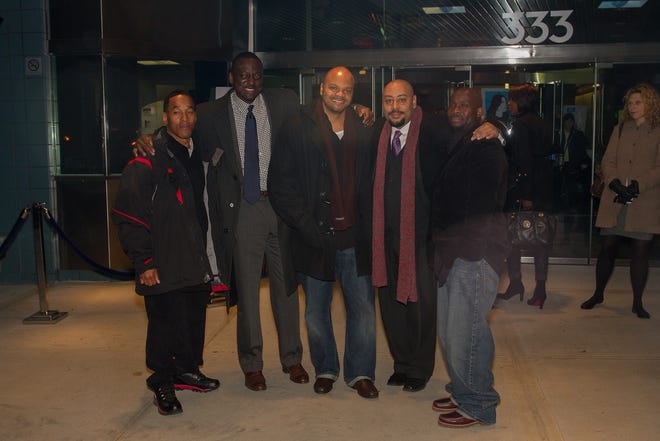2024-08-23 11:10:02
Speaking at the Democratic National Convention in Chicago Thursday are “The Central Park Five,” later known as the “Exonerated Five.”
The group of Black and Latino men were just teenagers over 30 years ago when they were convicted of the brutal assault and rape of white female jogger at Central Park in Manhattan, New York City.
The high-profile case received national attention as New York officials were criticized as being “soft on crime” and for allowing lawlessness to unfold at the park after police made multiple arrests for assaults in the park that evening.
A little over a week after the jogger was attacked, Donald Trump, at the time a real estate magnate in New York, called for the return of the death penalty for murder in full-page advertisements in New York newspapers. Although the jogger barely survived the attack, Trump said he was motivated to run the ad following the attack.
“I want to hate these muggers and murderers,” Trump wrote. “They should be forced to suffer and, when they kill, they should be executed for their crimes.”
After a serial rapist confessed to attacking the jogger, the convictions for the Central Park Five were vacated in 2002. The case then became an example of racial profiling, discrimination and inequality in the justice system and media.
Who are the ‘Central Park Five?’

Originally six teenagers were indicted for the assault, but charges against Steven Lopez were dropped after Lopez pleaded guilty to a different assault.
The remaining five — Antron McCray, Kevin Richardson, Yusef Salaam, Raymond Santana and Korey Wise — were convicted of the offenses and spent between 7 and 13 years in prison.
Once exonerated, most of the men became activists. All of them, except McCray, spoke at the DNC on Thursday along longtime activist and Rev. Al Sharpton. Salaam was elected to the New York City Council last year.
What happened the night of the attack?
On April 19, 1989, at about 9 p.m., dozens of teenagers committed several attacks, assaults and robberies against people patronizing the park.
While jogging, a 28-year-old woman was knocked down and dragged nearly 100 yards off the road and violently assaulted and raped. At about 1:30 a.m., the woman was found tied up in a shallow ravine.
The first police officer who saw her said: “She was beaten as badly as anybody I’ve ever seen beaten. She looked like she was tortured.”

Who was arrested and confessed?
Police arrested six teens in connection to the attack despite none of their DNA matching the DNA from the crime scene, instead police said the results were “inconclusive.”
Lopez denied any knowledge of the jogger but named the other five as possibly being involved.
The boys, between ages 14 and 16, confessed to being accomplices in the attack but all denied having anything to do with the sexual assault. Within two weeks, each of the boys recanted their confessions, saying they were coerced by police who promised they’d be going home.
In 2014, the Exonerated Five settled a federal lawsuit with New York City for $41 million.






